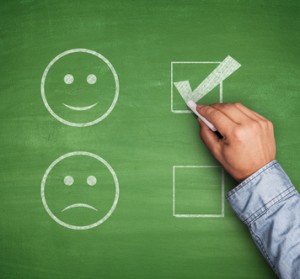Content for Every Buying Stage
 Previously, I’ve touched upon how important buyer personas are when it comes to creating content. In this post I’d like to move on to the next step: creating content for each stage of the buyer funnel.
Previously, I’ve touched upon how important buyer personas are when it comes to creating content. In this post I’d like to move on to the next step: creating content for each stage of the buyer funnel.
If you’re thorough when creating your buyer personas, this will be a natural next step. The data you use to create your personas should tell you approximately where they fall in the funnel.
If the data says they’re searching for a specific product or service, you know they’re probably in the late stages and ready to buy. If they’re just doing general searches, you know they’re still in the early stages. When you create content for buyers at each stage, you’re guiding them through the funnel.
Early Stage Content: Generating Awareness
At this stage you’re just trying to introduce yourself to potential buyers. Content that focuses on what your products or services can do for them isn’t going to hold their interest.
Checklists, and general advice are good examples of early stage content. If you own, say, a plant nursery, a blog post about what to plant in the fall or general gardening tips would be good early stage content.
This type of content accomplishes two things: It makes the consumer aware of your presence and begins to build trust.
Middle Stage Content: Engagement and Education
This is the stage where you get to focus more on what your brand has to offer. Consumers at this stage know who you are, but they’re still not sure that you have what they really want.
Product comparisons, buying guides and tutorials are good candidates for middle stage content. For a company that sells home appliances, a stove or oven buying guide would be a good for this stage.
Content for this stage should tell the consumer about what your products or services can do for them, while continuing to build trust. Consumers at this stage either came found you because they were searching for more information about your products or services, or they were drawn there by your early stage content.
Late Stage Content: Conversion and Retention
Content created for this stage should be all about you. The people who consume this content are ready to do business with you and they just need a little help making the final leap.
Content created for the last stage should be specifically about your products or services. If you run a catering service, good last stage content would be coverage of events you’ve catered or a blog post about how your menu options change from season to season in order to make the most of fresh local ingredients.
By providing content for all of the buying stages, you’re ensuring that you reach and engage as many potential customers as possible.



